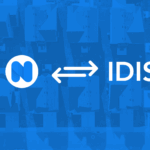
Buzzwords like “government efficiency” and “citizen experience” often dominate discussions about public sector innovation. But how do these ideas translate into tangible results? Many agencies are finding the answer in what we at Neighborly Software call a household-centric approach to program administration. This methodology is transforming how low-income households access critical resources and how governments manage public funds.
Here’s the problem: low-income households often don’t know which government programs they qualify for. They spend precious time filling out multiple applications, proving their income again and again, and dealing with different departments. It shouldn’t be this complicated for people who need help.
Our household-centric approach changes this. Instead of making people navigate separate programs, we look at the whole household’s needs at once. This approach eliminates redundancies, reduces administrative burdens, and ultimately improves outcomes for both households and agencies.
Technology as an Enabler
The household-centric model would be impossible to implement without robust technology. Neighborly Software includes all the necessary components to make the vision a reality. Here’s how it works:
- Universal Application: The system uses conditional logic to tailor the application process by presenting relevant questions based on previous answers.
- Eligibility Determination: The system’s rules engine automatically determines applicants’ eligibility for programs based on their responses.
- Resource Stacking: The software integrates eligibility criteria across federal, state, and local programs, enabling applicants to access multiple funding resources through a single application process.
- Streamlined Verification: Income and household information only need to be submitted once, significantly reducing the paperwork burden for applicants.
- Role-Based and User-Based Permissions: The system ensures that only authorized personnel have access to sensitive information, adhering to the principle of least privilege to protect applicant privacy.
- Comprehensive Program Management: Neighborly Software has the ability to manage programs that are administered as grants or as forgivable, deferred, or amortizing loans, or a combination thereof, providing the flexibility needed to meet diverse program requirements.
- Advanced Data Model: The approach requires a robust data model that supports reporting at both the household level and by individual government programs, providing actionable insights for agencies.
Benefits for Households
For low-income households, this technological transformation offers:
- Simplified Access: No more navigating complex program requirements or managing multiple applications.
- Reduced Barriers: Income verification and other supporting documents are only submitted once, saving time and effort.
- Increased Opportunities: By identifying all eligible programs, the household-centric approach ensures that applicants receive the full spectrum of available assistance.
Benefits for Governments
Government agencies stand to gain equally significant benefits from adopting this approach:
- Improved Collaboration: Cross-departmental data sharing fosters greater alignment and reduces administrative silos.
- Faster Fund Distribution: Streamlined workflows enable agencies to deliver critical assistance more quickly to those in need.
- Fraud Prevention: By centralizing applications and leveraging advanced data analytics, agencies can more effectively detect and mitigate potential fraud.
- Enhanced Reporting: The system’s data model enables granular reporting, allowing agencies to analyze performance at the household level and across specific programs.
A Vision for the Future
The household-centric approach, powered by technology, represents a fundamental shift in how public programs are administered. By focusing on the needs of households rather than the silos of individual programs, governments can deliver on the promise of efficiency and citizen experience.
At Neighborly Software, we are committed to helping communities help people. Our technology enables agencies to embrace this transformational model, bridging gaps, improving outcomes, and delivering measurable impact. Together, we can reimagine public service delivery for the better.









